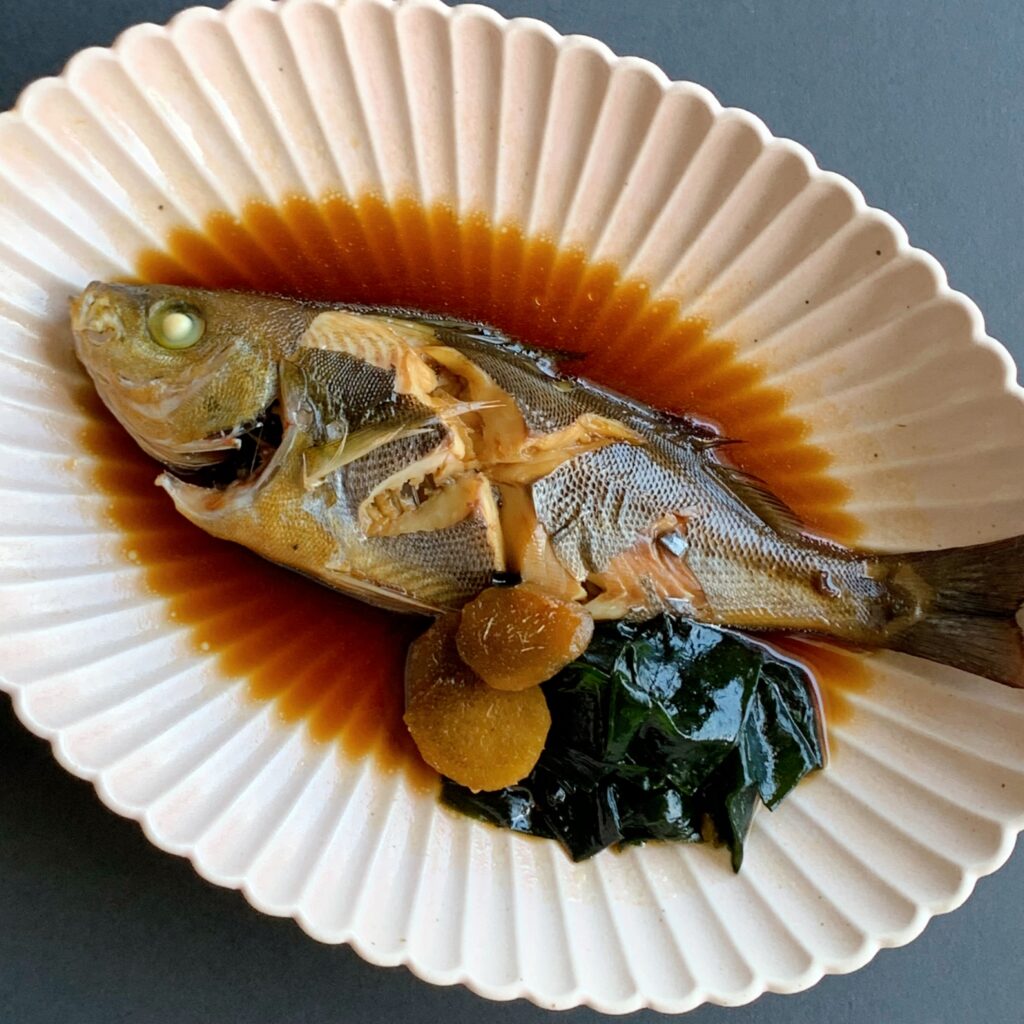
Isaki no nitsuke(イサキの煮つけ)
A dish of isaki (chicken grunt) simmered in soy sauce. Nitsuke is a representative Japanese dish.
The type of fish is not limited to isaki; sea bream, Spanish mackerel, right-eye flounder, etc. may also be used.
Fish dishes tend to always be the same, but I saw chicken grunt at the supermarket and tried it for the first time. The meat was soft and delicious.
However, since it has many small bones, it may be difficult for children and the elderly to eat.
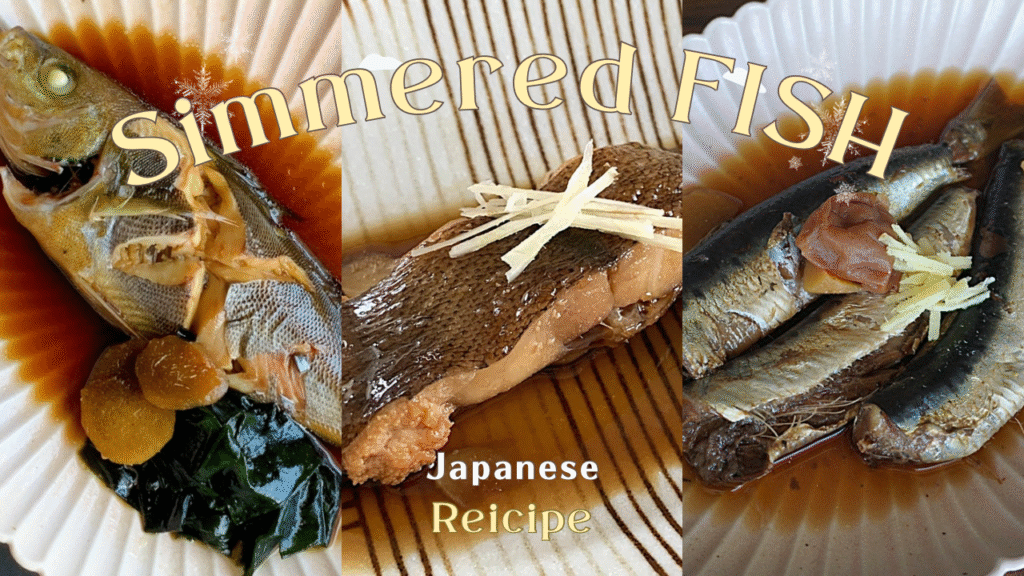
What kind of food is Isaki fish (chicken grunt) ⁇
There are many different types of white fish, and Isaki is one of them.
The flesh is white and similar to red sea bream, but it is softer and has more fat than red sea bream. It can be eaten in a variety of ways, including sashimi, grilled fish, boiled fish, and fried fish.
Isaki is a saltwater fish that lives in rocky reefs along the coast of East Asia, and adults reach a total length of 45 cm.
The season is from around May to July. Isaki is carnivorous and preys on small fish, crustaceans, polychaetes, etc.
Isaki’s English name is “Chicken grunt”. This is said to be because the dorsal fin resembles a chicken’s crest.
Grunt is a word that refers to the sound of a grunt, and this comes from the grunting sound that the Isaki makes when it is caught.
The commonly known kanji notation is “伊佐木”, but it is also sometimes written as 鶏魚”. This translates into English as Chicken fish.
I don’t know which country first named them, but it’s an interesting phenomenon that both names come from chickens.
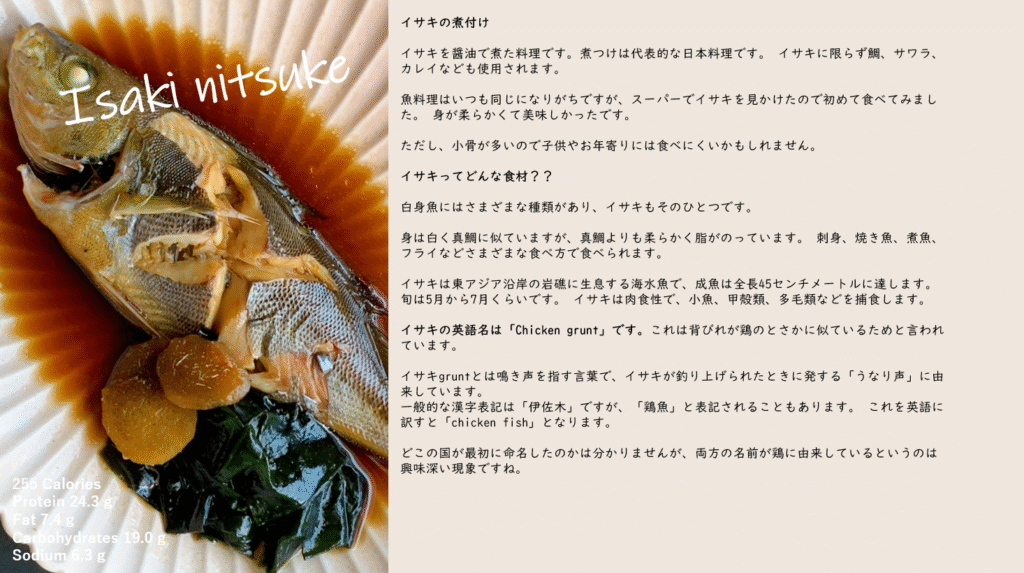
NUTRITION FACTS : Isaki nitsuke (Chicken grunt in soy sauce)

- 255 Calories
- Protein 24.3 g
- Total Fat 7.4 g
- Total Carbohydrates 19.0 g
- Sodium 4.1 g
INGREDIENTS : Isaki nitsuke (Chicken grunt in soy sauce)

- Chicken grunt 130g (Waste rate 45% Edible portion 130g)
- Ginger 5g
- ☆Soy sauce 25g
- ☆Sugar 10g
- ☆Mirin 10g
- ☆Sake 20g
- ☆Water 100g
How to make Isaki nitsuke (Chicken grunt in soy sauce)
In a corner of a Japanese supermarket, there is a section that handles fresh fish. I asked the staff in charge of the fresh fish section to remove the scales and innards of the fish. In Japanese supermarkets, if you ask the staff, they will do this for you for free.
- Remove the scales and guts from the grunt.
- Make a cross-shaped cut in one side of the grunt’s skin. This will allow the broth to penetrate the fish more easily.
- Slice the ginger.
- Add soy sauce, sugar, sake, water, and ginger to a pot.
- Simmer the fish for as short a time as possible. To achieve a good flavor quickly, it’s important not to use too much water, so be sure to use the right amount.
- Bring the broth to a boil.
- Add the fish to the boiling broth. Be sure to place the fish in the boiling broth while it’s still boiling to coagulate the proteins on the surface of the fish through heat denaturation and prevent the umami flavor from leaking out.
- Reduce the heat to medium and cover with aluminum foil. (This process is called “otoshibuta.”) To prevent the fish from falling apart, do not turn it over. “otoshibuta” allows the broth to reach the surface of the fish and prevents it from shaking and losing its shape.
- Simmer for 7-8 minutes.
- Remove the aluminum foil.
- Scoop out the broth with a spoon and pour it over the surface of the fish.
- Simmer over low heat for a few minutes.
- Remove the fish from the pot and place on a plate.
- Once the broth has thickened, turn off the heat.
- Pour the broth into the dish.
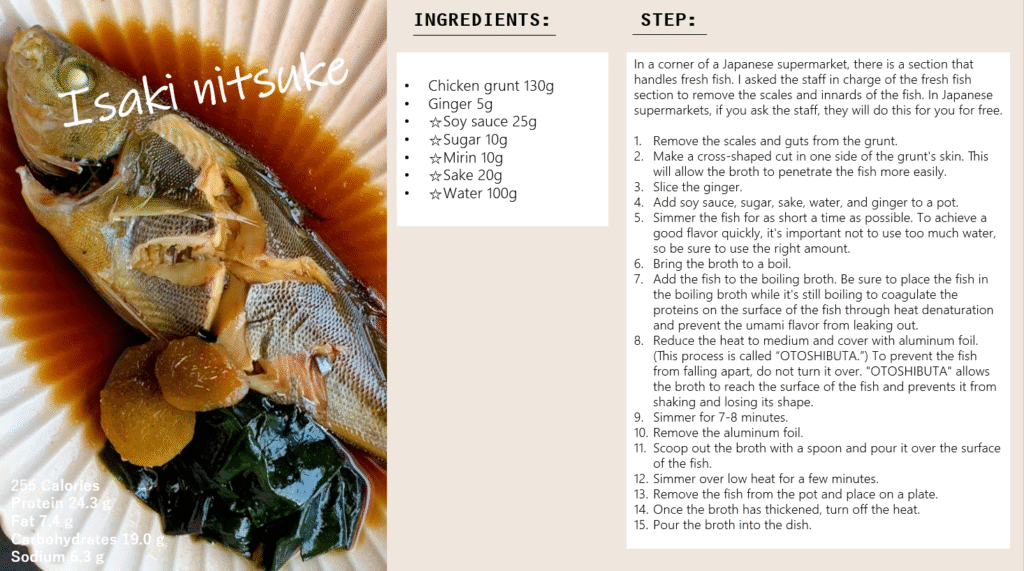
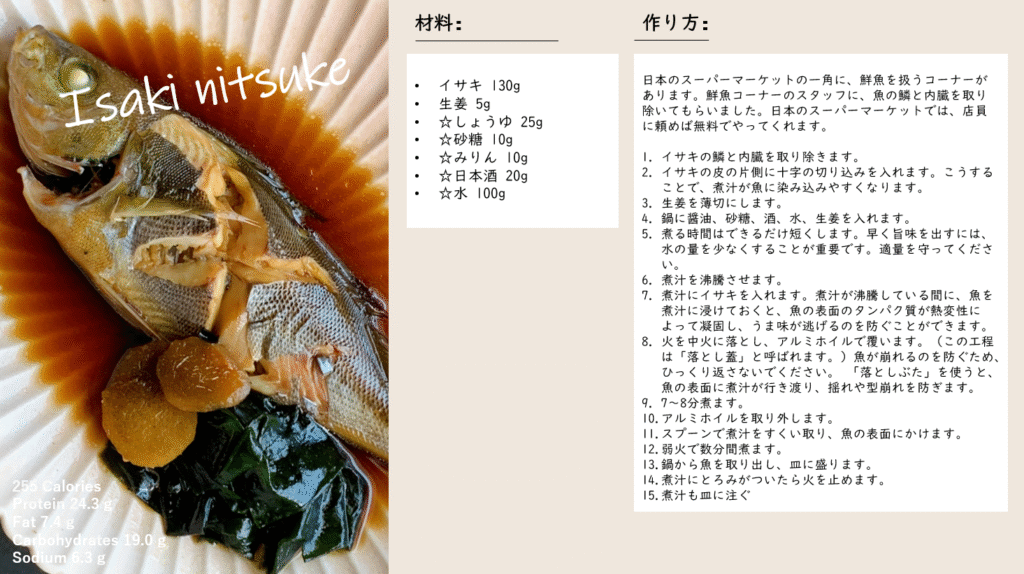
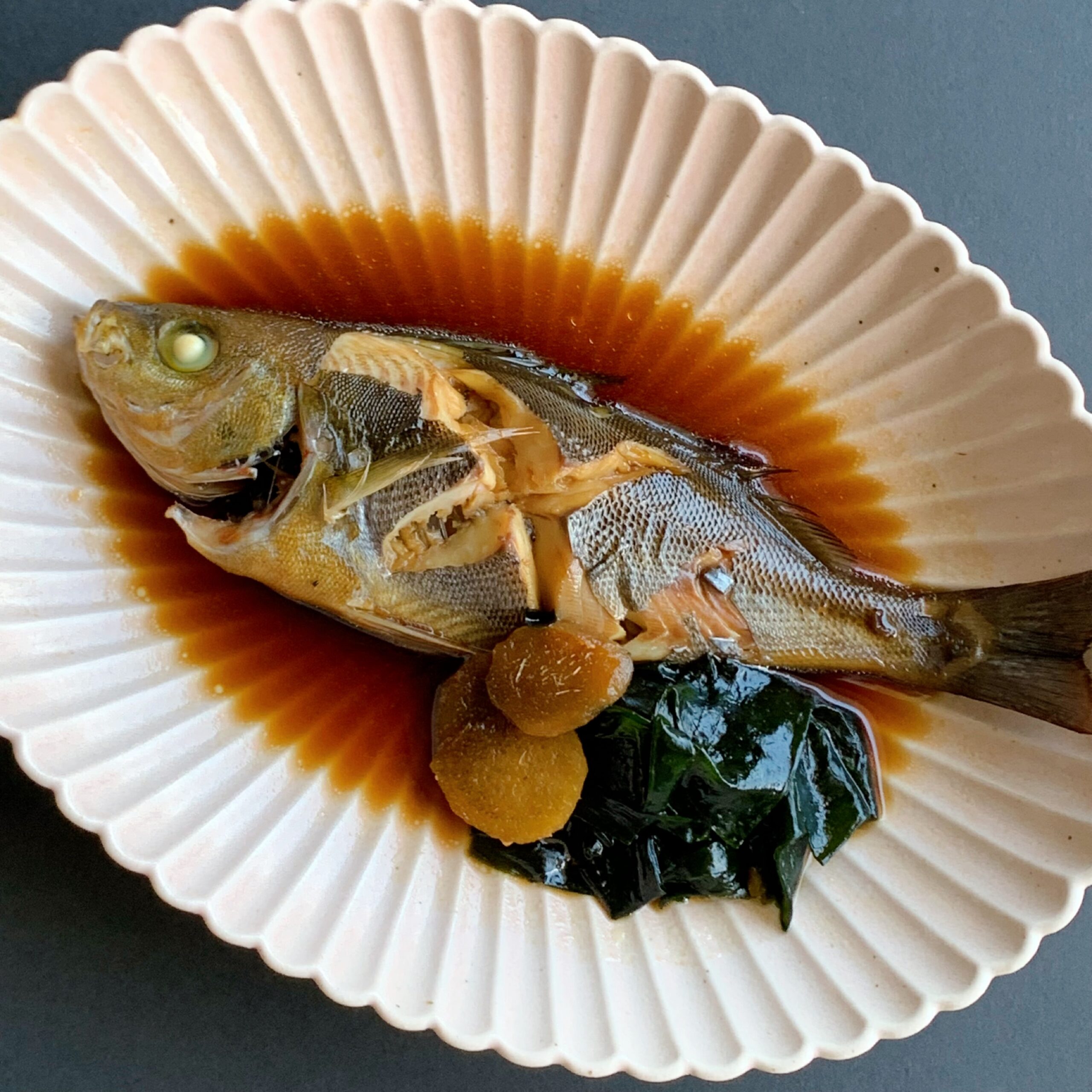


コメント